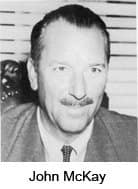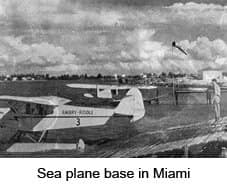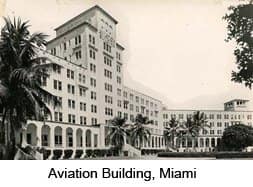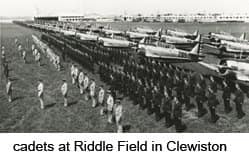
John Paul Riddle left American Airways in 1932 and, wanting to return to the state where he learned to fly, moved to Florida. Over the next few years, Riddle formed a number of local aviation enterprises and was able to stay in business through the investments of friends back in Cincinnati. By 1939, Riddle was again able to open a flight school using the original Embry-Riddle name. He asked Embry to rejoin him, but the latter had no interest in moving to Florida. Instead, Riddle found a partner in a local Miami attorney, John McKay and his wife, Isabel. The Embry-Riddle Company was reborn in October 1939 at a seaplane base in Miami with two planes, one flight instructor and one maintenance man.

The creation of the Civilian Pilot Training Program that same year again brought prosperity to the reborn company. Embry-Riddle arranged to partner with the University of Miami to provide flight training to civilians under this new federal program. The company leased a hangar at Miami Municipal Airport and by 1941 was operating with 26 aircraft and had graduated 250 students. The Technical Division of the Embry-Riddle School of Aviation was experiencing rapid growth and allowed the company to purchase the former Fritz Hotel in Miami for all of its non-flying operations.

In 1940, the U.S. government selected the Embry-Riddle Company to participate in the U.S. Army Air Corps Training Program. However, this arrangement was contingent on Riddle finding suitable airfields for training of the thousands of military cadets expected. John Paul Riddle immediately selected the World War I facility at Carlstrom field in Arcadia where he himself had learned to fly as a cadet in the early 1920s. On March 22, 1941, after major reconstruction of the airfield, the Riddle Aeronautical Institute (RAI) opened the new Carlstrom Field for cadet flight training. The field featured such amenities as a swimming pool, tennis courts, and a baseball diamond. Further expansion to accommodate more cadets resulted in the largest non-military operated flight training center in the United States. RAI continued its expansion by acquiring another WWI facility at Dorr Field, just a few miles from Carlstrom. The combined activities at Carlstrom and Dorr Fields actually created a housing shortage in nearby Arcadia. Meanwhile, Embry-Riddle’s Miami operations were expanded as the Technical Division acquired the former Coral Gables Coliseum. Between 1939 and 1941, Embry-Riddle grew far beyond the tiny seaplane base in Miami. The school was now composed of six divisions with 87 flight instructors and six ground instructors. They provided training at several airfields, owned 24 aircraft and operated 96 Stearman trainers on loan from the U.S. Army. Nearly 400 people were employed by Embry-Riddle with an annual payroll of $500,000.

World War II proved a golden opportunity for the school which went on to train thousands of war-time American, British, French, Brazilian and other South American cadets to fly and maintain aircraft. The creation of the Lend-Lease Act of March 1941 resulted in Embry-Riddle being asked by General Hap Arnold to train British pilots, and in 1941, the British Flying Training School No. 5 was established at Carlstrom Field. British cadets were trained alongside their American counterparts for several months. Soon after, Riddle developed another training field near Clewiston and the B.F.T.S. No. 5 was moved to Riddle Field where 7000 cadets were ultimately trained. In late 1943, at the request of Brazil’s Air Minister, Embry-Riddle established a separate school in San Paulo, Brazil to provide technical instruction to Brazilian cadets. By early 1944, the Escola Técnica De Aviação had basic, aircraft, engines and instrument departments.

By the height of the war, Embry-Riddle was the largest privately-operated flight school in the world and had trained 26,000 people, military and civilian, American and foreign. However, the boom in aviation training had been linked directly to the war effort and, as the war drew to a close, Embry-Riddle was now experiencing contraction. In September 1944, John McKay bought out John Paul Riddle’s interests in Embry-Riddle, and Riddle decided to solely pursue his activities in Brazil.
